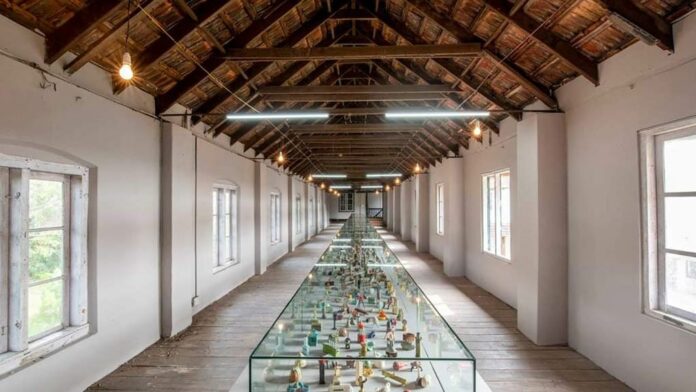Kochi-Muziris Biennale
Kochi, India
Kochi Biennale Foundation
Indian Chamber Centenary Building
Indian Chamber Road, Mattancherry
Kochi, Kerala 682 002, India.
kochimuzirisbiennale.org | [email protected]
The Kochi-Muziris Biennale is an international exhibition of contemporary art held in Kochi, Kerala, every two years. The first edition of the Kochi-Muziris Biennale began on 12/12/12 and was set in spaces across Kochi, Muziris, and surrounding islands. There were shows in existing galleries and site-specific installations in public spaces, heritage buildings, and disused warehouse structures. Indian and international artists were invited to exhibit artworks across a variety of mediums, including film, installation, painting, sculpture, new media, and performance art.
By celebrating contemporary art worldwide, The Kochi-Muziris Biennale seeks to invoke the historic, cosmopolitan legacy of the modern metropolis of Kochi and its mythical predecessor, the ancient port of Muziris. Alongside the exhibition, the Biennale offered a rich program of talks, seminars, screenings, music performances, workshops, and educational activities for school children and visitors of all ages. In cooperation with the Muziris Heritage Project, The Kochi–Muziris Biennale seeks to link the past with the modern-day present.
The ancient city of Muziris, located 30 km from Kochi, was a prosperous seaport and financial center in the 1st Century B.C. Believed to have been washed under the sea during the 1341 AD Periyar River 1flood, Muziris was a crucial link in the Indo-Roman Empire and Indo-Greek trade routes. Muziris drew legions of Roman, Greek, Chinese, Jewish, and Arab traders from across the sea, whose architectural and cultural influences are still to be found in the area. The region is unique as it is said to be home to India’s first church (Mar Thoma church), the first mosque (Cheraman Juma Masjid), and the oldest European monument (Portuguese fort). Today, a series of archaeological sites remain, which are currently being excavated and restored by conservation architects with the support of the State Government of Kerala and the Indian Central Government. The archaeological and historical data on ‘Muziris’ shows that it was a veritable business and cultural center, with far-reaching international associations dating back more than 2000 years. Realizing its potential impact, the Government of India initiated an ambitious project to encompass a larger area, including North Paravur and Kodungallur Taluks, which have various protected monuments.
Today, the area has numerous monuments from this era that speak volumes of its rich heritage. These heritage and archaeological activities have been designed to involve local communities and encompass broader development goals. The Muziris Heritage Project is not about tourism alone but about making a significant difference through conservation, restoration, history, environmental projects, research, development of crafts and art forms, occupation, and other community activities.




